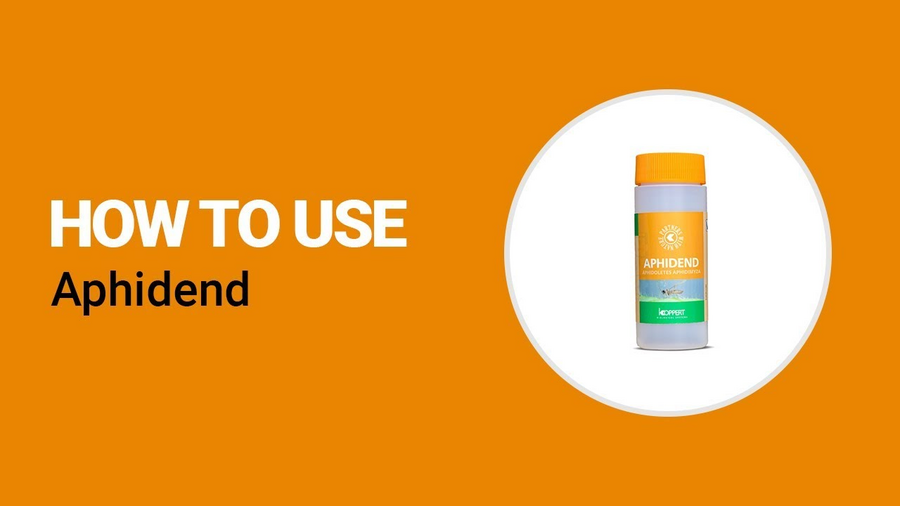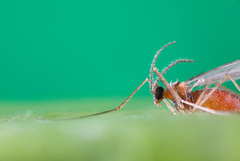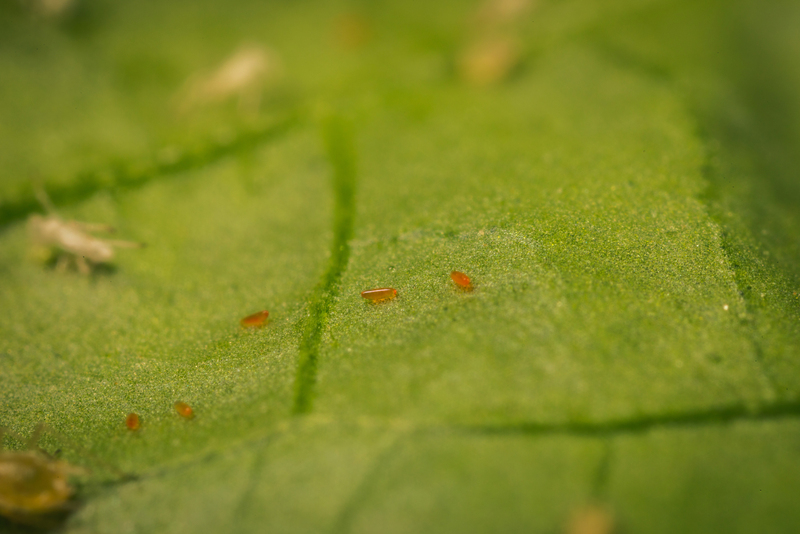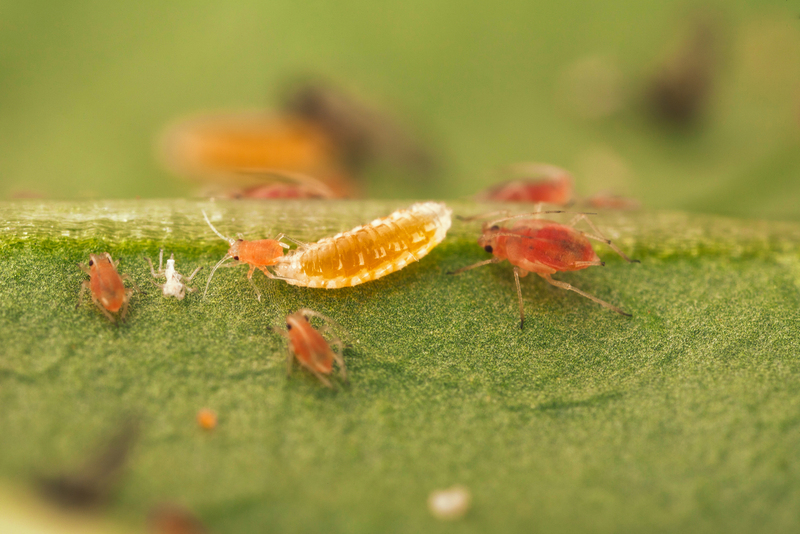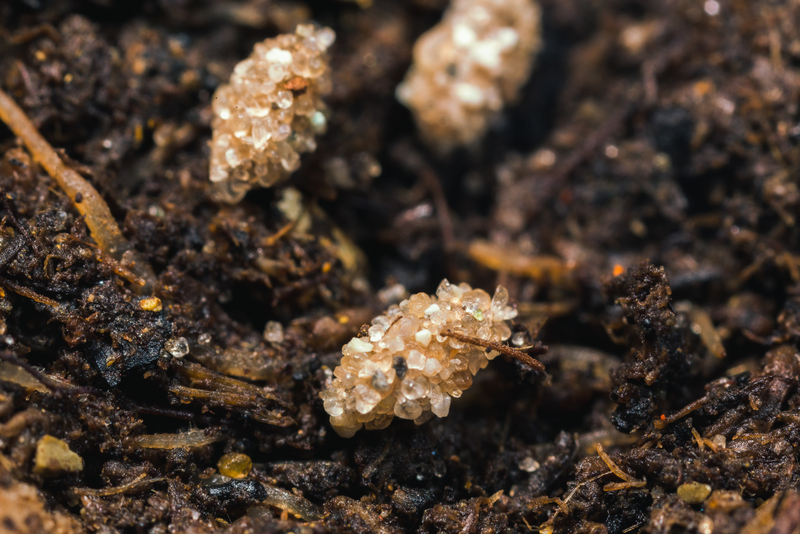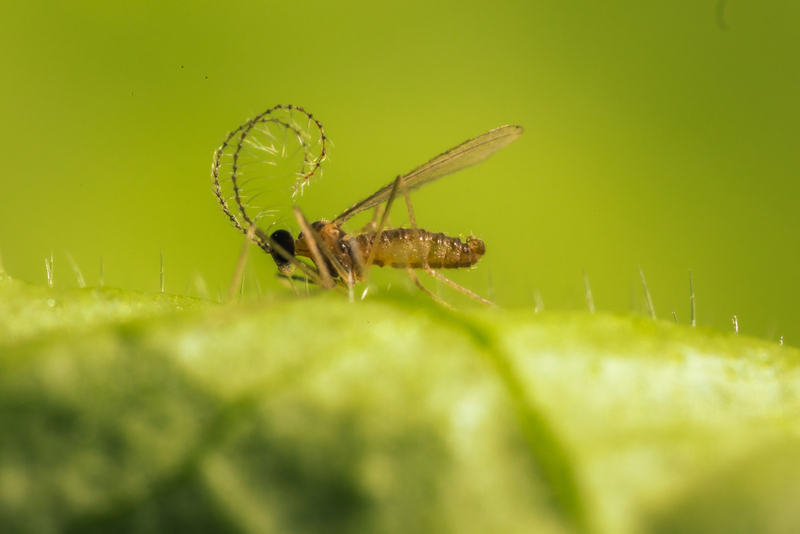Aphidoletes aphidimyza for aphid control
Aphidoletes aphidimyza is a species of predatory gall midge known for its effectiveness in biological pest control, specifically targeting aphids. Commonly known as the aphid midge, this beneficial insect is widely employed in integrated pest management (IPM) programs to suppress aphid populations in various agricultural and horticultural settings.
The predatory gall midge Aphidoletes aphidimyza is used for the control of the following pests:
Aphidoletes aphidimyza is available at Koppert as Aphidend.
How to use Aphidoletes aphidimyza
The predatory gall midge Aphidoletes aphidimyza is available in bottle (Aphidend).
-
Open the bottle in the greenhouse
-
Place the bottle directly on the soil or rockwool slabs or hang it in-between the plants
-
Do not scatter the contents
-
Once emerged, the adult gall-midges will leave the bottle and spread
The dosage of Aphidend depends on climate, crop and aphid density and should always be adjusted to the particular situation. Start introduction as soon as the first aphids are detected in the crop. Introduction rates typically range from 1-10 per m2/release. Releases should be repeated at weekly intervals until control is achieved. Consult a Koppert advisor or a recognized distributor of Koppert products for advice on the best strategy for your situation.
Koppert products
Best conditions for use of Aphidoletes aphidimyza
The gall midge Aphidoletes aphidimyza is most effective between 20 and 30°C (68 and 86°F), effectivity decreases significantly at higher temperatures. As gall-midges are active at night, it is crucial to keep the night temperature above 12°C/61°F, to ensure optimal conditions for oviposition. Apply Aphidoletes aphidimyza in an environment with a high relative humidity (> 70%) to get the best results.
Feeding behaviour of Aphidoletes aphidimyza
The searching behaviour of adult female gall midges is extremely efficient. They are capable of locating aphid-infested plants among numerous non-infested ones, facilitating the rapid establishment of midge populations within the crop. Since eggs are generally laid within, or close to, an aphid colony, finding prey for the newly hatched larvae is normally not difficult. When a gall midge larva attacks an aphid, it injects a paralyzing toxin that also starts predigestion of the body contents. The larva then sucks out the body fluids, leaving the dead aphid hanging by its snout from the leaf to turn brown or black, and eventually decay. The quantity of aphids consumed by a gall midge larva depends on temperature, relative humidity, age and size of the aphids, and the aphid species. The time required to consume an aphid can vary from a few minutes to several hours, depending on the age and nutritional condition of the predator, as well as the size of the prey.
Life cycle of Aphidoletes aphidimyza
Growers can recognize the different life stages of the gall midge Aphidoletes aphidimyza when using it as a biocontrol product by observing distinct physical characteristics at each stage. Here's how growers can identify the different life stages:
-
Egg Stage: Aphidoletes aphidimyza eggs are tiny and elongated, usually laid individually near aphid colonies. They are translucent and difficult to see without magnification.
-
Larval Stage: The larvae of Aphidoletes aphidimyza are the primary predatory stage. They are small, orange maggots with distinct black mouthparts. These larvae actively feed on aphids and can often be found near aphid-infested areas.
-
Pupal Stage: Aphidoletes aphidimyza pupae are inactive and resemble small, dark-colored oblong shapes. They are often found in the soil or on plant surfaces near aphid colonies.
-
Adult Stage: Adult Aphidoletes aphidimyza are small, slender flies with long legs and distinctive wing markings. They have a dark body coloration and are commonly seen resting on plant foliage or flying near aphid-infested areas.
By recognizing these characteristic features at each life stage, growers can effectively monitor and utilize Aphidoletes aphidimyza as part of their integrated pest management strategies.
